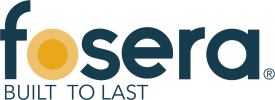Publication - THE ROLE OF VOLUNTARY CARBON MARKETS IN CLEAN COOKING
►Add a New Publication
►See All Latest Publications
Carbon finance can unlock further investments in the clean cooking industry. By helping to de-risk investments and provide an alternative source of income, carbon finance can contribute to scaling up clean cooking ventures. It can also help to bring down the up-front cost to users, making modern energy cooking solutions more accessible. Innovative financing models are breaking down barriers with pay-as-you-go services allowing users to make smaller payments spread over time, based on actual usage. As a results-based payment delivered upon achievement of results, carbon finance can also incentivize companies to provide higher-quality technologies and fuels to their customers, as well as services to ensure continued maintenance, repair, and use of technologies.
Aggregate historical carbon finance flows to the clean cooking sector fall between USD 60 -150 million. The acceleration of carbon credit issuances from clean cooking activities observed in recent years has been triggered by rising carbon credit prices. Combining pricing data from the cooking industry with historical carbon credit issuance and retirement, records allows for an approximation of carbon finance flows that have reached the industry over the past decade. Using the volume of carbon credits issued, an estimated USD 150 million in aggregate carbon financing may have been generated by clean cooking programs worldwide between 2013 and 2022, with annual revenue, and flows peaking in 2020 at just over USD 35 million. Using a more conservative approach that bases finance flows on carbon credit retirement activity only, aggregate carbon financing adds up to nearly USD 60 million over the same time period. Recognizing that developers of clean cooking programs generally transact through intermediaries such as project aggregators or brokerage firms, the true volume of finance reaching
projects on the ground was likely lower.
Admin:



















